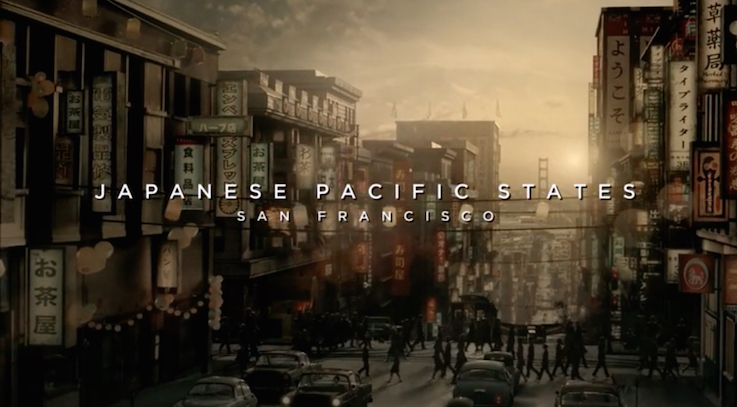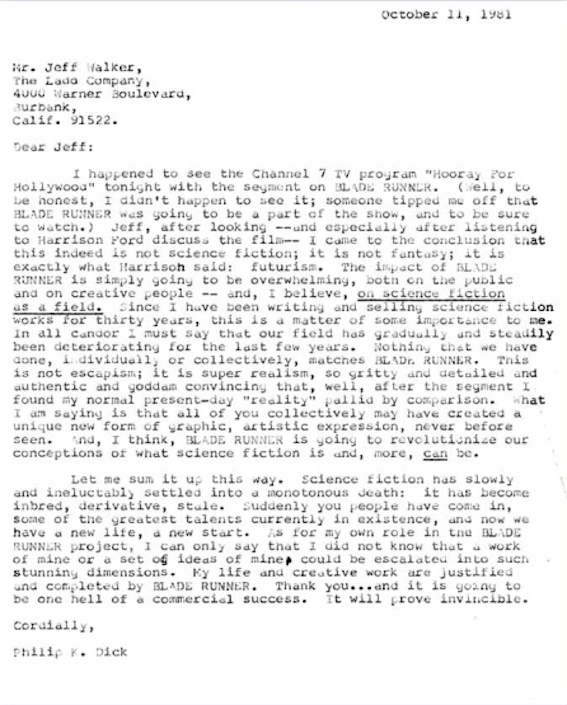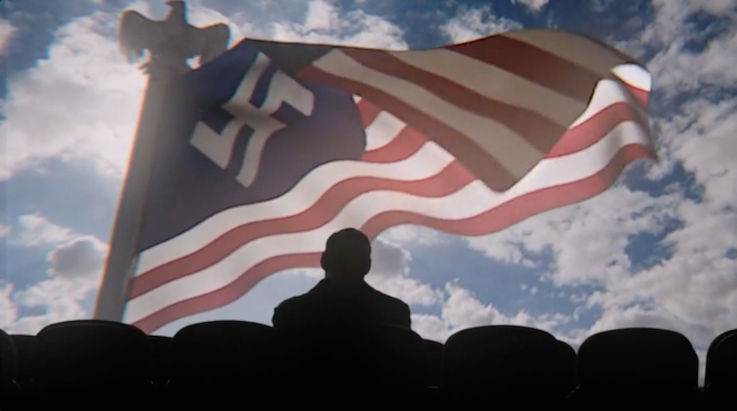Do not adjust your set. It is 1962. 16 years ago the Allies lost the war. The USA is divided up into the Japanese controlled Pacific States of America, and the Nazi controlled USA on the East Coast. An uneasy neutral divide, the Rocky Mountain States lie between.
The two powers have divided the world. Asia and the Pacific, some parts of South America held by Japan. The Greater German Reich controls Europe, and have enacted a terrible nuclear Final Solution in Africa, enacted pogroms across Russian and the Slavic world. European Jews are all but wiped out. In America, those that haven’t been deported for extermination, change their names and even their faces.
While Japan attempts to bring its particular vision of civilization, a refined sensibility informed by Buddhism, the Tao, the I Ching, a culture of relationships defined by traditions of politeness, of class, of place, to its new territories, the Reich employs ruthless efficiency, a will to expansion and power, and technological superiority to make and control a new world. They drain the Mediterranean for farmland. Their rockets land robots to begin colonization on Mars and the Moon. The one factor that holds them back, the internecine struggles between different factions and military groups. An aging Hitler is dying, sick, locked away, mad through syphilis. The Nazi leaders, Bormann, Heydrich, Goebbels, Seyss-Inquart and others plot and jockey for power.
To this tense scenario Philip K Dick takes us into the lives and struggles of a range of ordinary characters, their lives connected in subtle ways by two books, The Grasshopper Lies Heavy, a banned novel that presents an alternate history where the Allies won the war (yes this alternate history has crucial alternate history inside it) written by The Man In The High Castle, and the I Ching – The Book Of Changes. A 6000 year old book of epigrams, of poetic statements, which when read in varying combinations according to a selection based on a random number generated through tossing coins or turning marked sticks, answers a question, used as an oracle, a guide, by which many of the characters make their decisions.
Philip K Dick doesn’t deal in heroes, which isn’t to say they don’t on occasion act heroically. for the most part they are ordinary people, often at odds with the world, with ordinary hopes and dreams and troubles. Their lives are at the mercy of the great forces acting around them, but often behind that, as they muddle through there is a greater guiding force. There is often something ridiculous about their so ordinary lives. Like Frank Frink, a secret Jew, working in San Francisco making fake Americana for stores that cater to the elite Japanese collectors, but who wants to strike out on his own making handcrafted jewellery. Or his ex-wife Juliana, beautiful but perhaps slightly crazy. Travelling with a young Italian truck driver through the Rocky Mountain States to see the reclusive Hawthorne Abendsen, author of The Grasshopper Lies Heavy. Or Robert Childan, dealer in American antiquities, who mimics the Japanese while in his heart harbouring pre-war attitudes of white superiority, Tagomi, head of the Japanese Trade Mission, a Buddhist forced to kill when attack by agents of the Reich attempting to arrest a visiting guest, who suddenly experiences a transformation in the middle of San Francisco, and Mr Baynes, a German Naval Intelligence officer, pretending to be a Swede, with information that could forestall events that could prove destructive to everyone.

Even Philip K Dick’s Nazis aren’t the cardboard thugs and villains one has come to expect from countless film portrayals. Baynes, talking to a German artist on the Transatlantic rocket to San Francisco, who expresses the usual Nazi view, concludes that there is a psychotic streak in the German, that it is a psychotic world, “It is something they do, something they are. It is their unconsciousness. Their lack of knowledge about others. Their not being aware of what they do to others, the destruction they have caused and are causing.” Unconscious it is insanity, but when conscious, it is evil. Their view is toward the abstract, the cosmic. The urge that drives their insanity, in the face of nature that will one day fall to dust, is the will to control, to be the agents of history, not it’s victims.
It’s a pity then, that the creators of the TV adaptation of Philip K Dick’s The Man In The High Castle didn’t pay more attention to the metaphysical passages, the inner thoughts, the contemplations on the nature of evil, authenticity, reality, possibility that the characters express at crucial moments. It is not the sudden plot twists, the sudden shifts in reality, the devices such as ESP or interplanetary colonization or contact with a superior intelligence and other tropes that make Philip K Dick’s work the profound, the intriguing explorations of thought and the world and the human condition that they are. Those tropes are the surface, the illusion, devices used to illustrate. It is the philosophical and the metaphysical, the confrontation of the imaginary with the possible, a vision, through a glass darkly, to our own world, and it’s ambiguous nature is the heart of the story.
As Baynes thinks as he heads toward a final confrontation toward the end of the novel, “We can only hope. And try. On some other world, possibly it is different. Better. There are clear good and evil alternatives. Not these obscure admixtures, these blends, with no proper tool by which to untangle the components. We do not have the ideal world, such as we would like, where morality is easy because cognition is easy. Where one can do right with no effort because he can detect the obvious.”
That world where it is easy does exist. It’s called Hollywood. Produced by Amazon and Ridley Scott, written by Frank Spotnitz and directed by David Semel, the TV series presents exactly that kind of unambigous vision. Brutal Nazis and implacable, inscrutable Japanese have divided up the United States, and both oppress heroic Americans who are standing up to totalitarian regimes.
The Grasshopper Lies Heavy rather than a novel is now a banned film, the possibility that the Allies won is presented as a credible reality, rather than a contentious fiction. In New York clean cut Joe Blake joins the American resistance, and is sent on a mission delivering a copy of the film to someone in the Rocky Mountain States. Nazis attack the resistance headquarters, killing some, capturing others. Joe Blake escapes.
In San Francisco, in the Japanese Pacific States, Juliana Crane an Aikido teacher, receives a copy of the film from her sister, who tells here she “Has found the answer to everything.” Her sister is killed by the Japanese, and Juliana sets out across country to make her sister’s rendezvous, to learn the secret behind The Grasshopper Lies Heavy.
The Reich and Japanese authorities are arranging the visit of the Japanese crown prince and princess to the Reich’s embassy in San Francisco. Misunderstandings hint at irreconciliable cultural differences, conflict. Intrigue. Tagomi and Baynes meet at the airport – one of the important and subtly interconnected plot elements is revealed immediately. Rufus Sewell, properly ruthless, tortures a resistance leader. There is no resistance in the novel, no attractive young American heroes struggling against enormous odds to defeat swaggering, scar faced Nazi and inscrutable Nipponese thugs.
Yet despite the changes, the reduction from a deep encounter with the philosophical, with reality itself, to a more prosaic tale with the bare bones of a shared scenario seemingly the only thing still in common, there is still something compelling about the show. Although there are no sleek German rockets beginning colonization on Mars, the reproduction of a 1962 America under the Axis powers is like a visual puzzle that is endlessly fascinating. Rock Hudson’s name is on the film hoardings, Doris Day is on the radio, Swastikas billow in Times Square, San Francisco is crowded with odd little Toyota bubble cars, the Rising Sun flies from the Golden Gate Bridge. It does have something of the intense, slow burn noir thriller that the book builds toward near the end, but it needs a little more of the humanism, the understanding, that Philip K Dick put in his work.
In one scene in the book Juliana recounts a joke told by Bob Hope (possibly the last sardonic American comedian). There’s a Nazi Major on Mars asking Martians for their papers. The Martians are one foot tall with green heads, and he’s asking them to produce documents showing their Aryan ancestry. When they can’t, he notes on his clipboard, Mars is populated by Jews. Amongst the profound philosophy, the shifting realities, there’s always a little dark humour in Philip K Dick.
Ridley Scott directed Blade Runner in 1982, based on Philip K Dick’s 1968 classic Do Androids Dream Of Electric Sheep? Again, a book that encompassed a profound exploration of what it is to be human, and the nature of authenticity, of reality, decay and nothingness, the notion of the tomb world and other spiritual and metaphysical ideas originally touched on in The Man In The High Castle.
Again, between the book and the film, there were fundamental changes. Philip K Dick never saw the completed film, he saw the script and some preview edits and on seeing a piece on TV about the upcoming film he said, “This is not escapism; it is super realism, so gritty and detailed and authentic and goddam convincing that, well, after the segment I found my normal present-day ‘reality’ pallid by comparison. What I am saying is that all of you collectively may have created a unique new form of graphic, artistic expression, never before seen. And, I think Blade Runner is going to revolutionize our conceptions of what science fiction is, and more, can be…I did not know that a work of mine or a set of ideas of mine, could be escalated into such stunning dimensions.” (Letter to Jeff Walker at the Ladd Company, Burbank, Oct 11 1981)
Clearly his thoughts on Blade Runner were almost prescient. It was a fundamental turning point in SF, helping to elevate fiction, films, and even comics from the genre ghetto to legitimate art, something his books should have achieved since the early 50s, if only an audience had been ready.
Can we be so effusive about the TV series of The Man In The High Castle? Not quite. However, not only did Philip K Dick experiment with multiple versions and variations of reality in his fiction and his philosophy, as a music aficionado who DJed a jazz radio show, he understood variation, reiteration, the same tale or tune approached from radically different directions. So I think he would have found this version of The Man In The High Castle, with its different instruments, its different orchestration, nevertheless a stunning realization.
Ridley Scott’s The Man In The High Castle is part of Amazon’s Pilot Season program. Amazon produced a range of pilot shows, and have called for people to comment and vote on which will go into full production. The Man In The High Castle is one of the most remarkable visions you will see this year. I can’t wait to see more.
You can watch, comment and vote on Amazon’s Pilot Programs at


